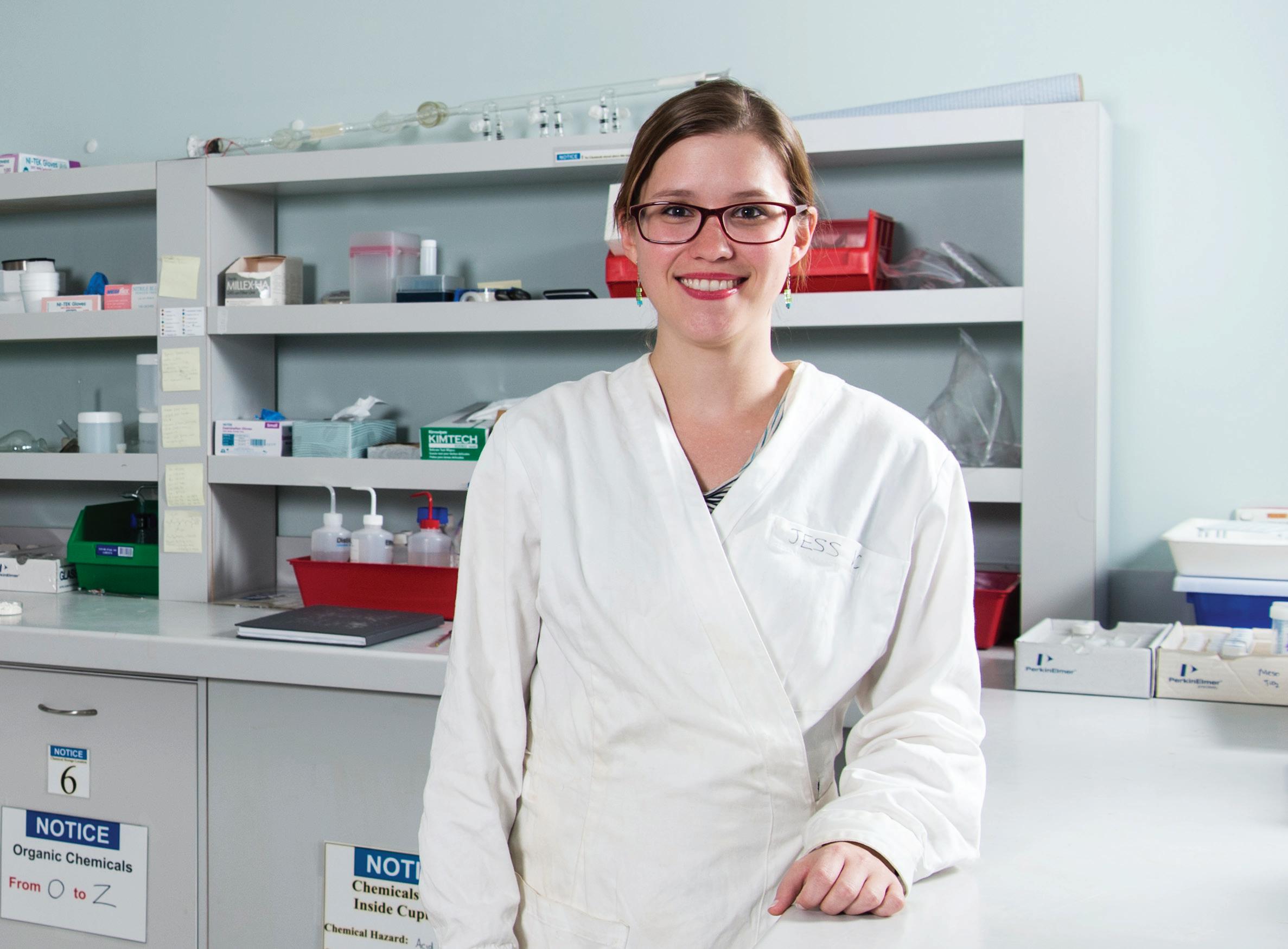
3 minute read
Advanced materials for radiochemistry
Towards promising new waste solutions
Research has been undertaken to develop advanced materials that have the capacity to separate desired elements from complex, radioactive multi-element solutions.
Selective elemental separation is also a challenging but important step in the context of environmental remediation, mining and industrial processing. Radiochemical separations have an added layer of complexity over traditional separations due to the presence of radiation.
In the nuclear industry, selective radiochemical separations are required to produce medical radioisotopes such as molybdenum-99. They are also used to purify uranium ore in order to generate fuel and to process spent, irradiated nuclear fuel.
The focus of this research is to treat solutions of spent nuclear fuel and recycle actinide elements, such as uranium, that can be re-used as fuel. Recycling of used nuclear fuel is of benefit both in terms of increasing the number of years that nuclear power could be a viable option for power generation as well as decreasing the radiotoxicity, long half-life and the volume of waste.
By selectively separating the actinides (uranium, plutonium, americium, curium and neptunium) you could
decrease the time required for waste to return to the safe radiotoxicity level of naturally occurring uranium from 130,000 years to 270 years.
Currently, most treatment of used nuclear fuel is performed using liquidliquid extraction. However, the use of solid materials that can sorb radioactive elements has many advantages, such as avoiding the production of organic solvent wastes during processing.
Framework materials based on titanium dioxide and zirconium dioxide have been developed because their radiolytic and hydrolytic stability should enable them to withstand the conditions of separations in a nuclear context. Further, these materials may be used as transmutation matrices or wasteforms once they are loaded with radionuclides.
In order to make these materials selective, the framework was coated with organic ligands. The organic ligands used were chosen based on their selectivity for elements that occur in the nuclear fuel cycle.
For example, titania (TiO2) nanoparticles coated with amine and phosphate-based organic ligands, are able to selectively remove uranium from acidic solutions in the presence of caesium, strontium and the lanthanide elements — cerium, europium and ytterbium.
Once it had been demonstrated that the organic coating on the titania nanoparticles was selective, more complex framework materials were developed to improve the sorption capacity and kinetics of the sorbent materials. Materials with high surface areas are desirable to improve sorption capacity and an ordered pore structure was desired to improve sorption kinetics.
Extensive optimisation of synthesis conditions resulted in the production of the desired ordered mesoporous titania powder. These conditions were then used to produce millimetre-sized, spherical, hierarchically-porous beads that also demonstrated ordered mesoporosity.
The bead form is more practical than powder as it allows close packing of chromatographic columns during production with minimal clogging and high ease of handling. Coating of the porous titania beads as well as titania nanoparticles with a modified version of a known organic ligand, bis-triazinyl-pyridine, produced materials that could selectively capture americium over europium.
This is a highly challenging but essential separation for reducing the radiotoxicity and long half-life of nuclear waste. This experiment also confirmed that the beads sorbed more americium (higher sorption capacity) in a shorter period of time (faster kinetics) than the nanoparticles.
Pictured
Dr Jessica Veliscek-Carolan at her workspace in ANSTO’s Materials Chemistry Laboratory.
Contact
jessica.veliscekcarolan@ansto.gov.au
COLLABORATORS

1
ANSTO
3
University of Sydney
2
Comisión Nacional de Energía Atómica (CNEA)
RESEARCH FACILITY / TECHNIQUE
Small angle X-ray scattering (SAXS) X-ray absorption spectroscopy (XAS) Nuclear magnetic resonance (NMR) Infra-red spectrometer Fluorescence spectrometer Nitrogen porosimeter Electron microscopes (SEM and TEM) Inductively coupled plasma mass spectrometer (ICP-MS) X-ray diffraction (XRD)
Gamma counter RESEARCHER TEAM
Dr Jessica VELISCEK-CAROLAN Dr Tracey HANLEY Prof Kate JOLLIFFE Dr Vittorio LUCA
1
1
3
2
PUBLICATIONS
ACS Applied Materials and Interfaces 2013 Separation and Purification Technology 2014
The Journal of Physical Chemistry C 2015
Journal of Hazardous Materials 2016 Chemical Communications 2015
RSC Advances 2016

